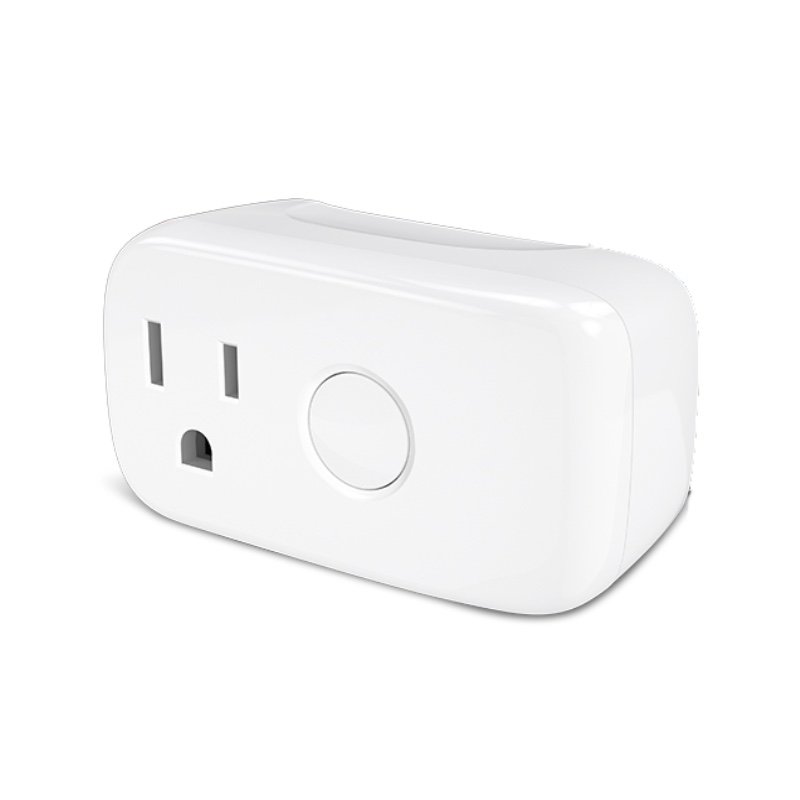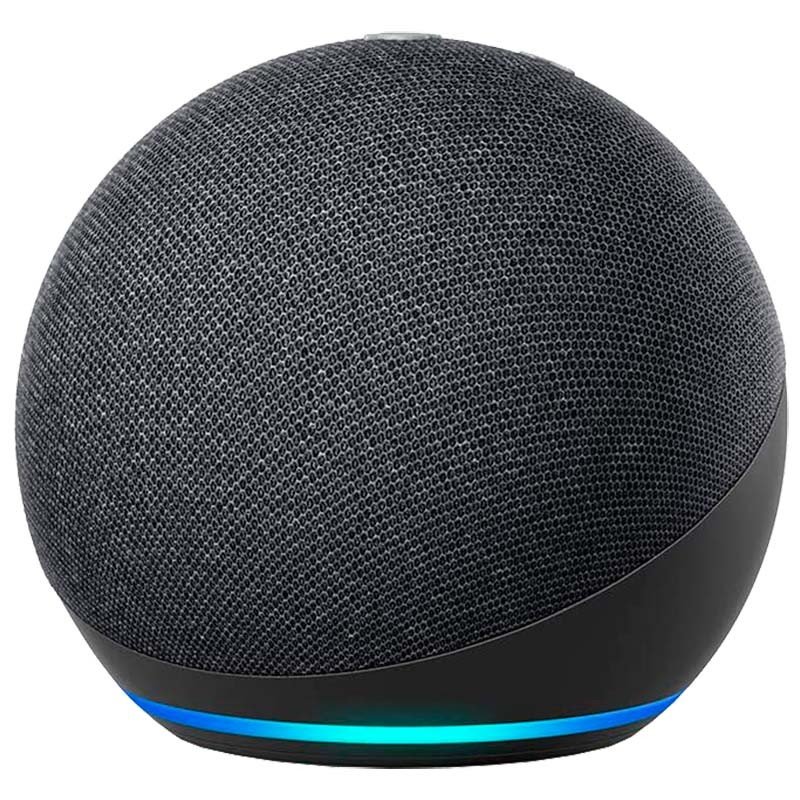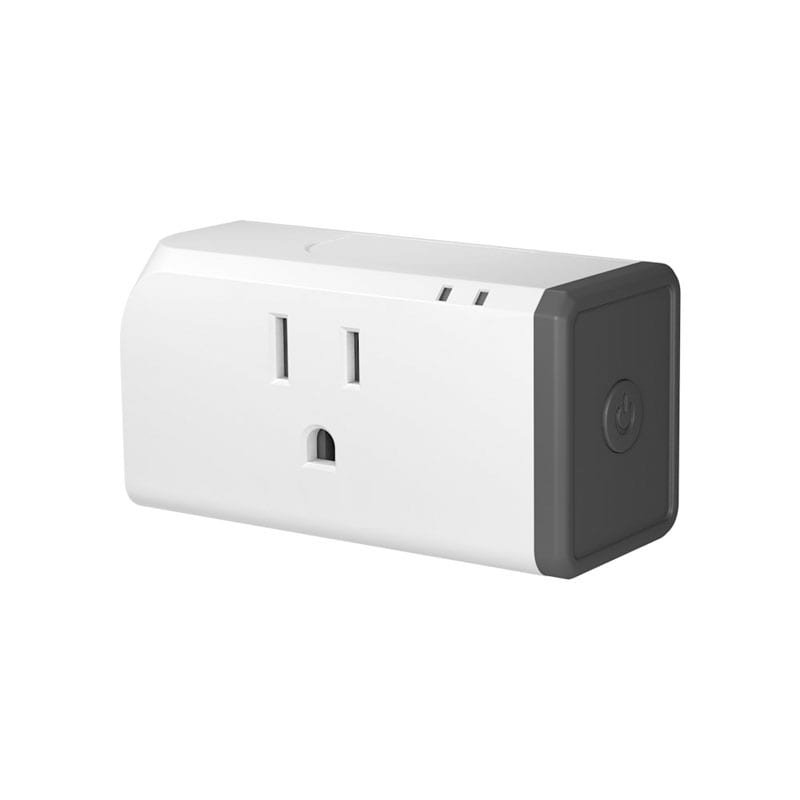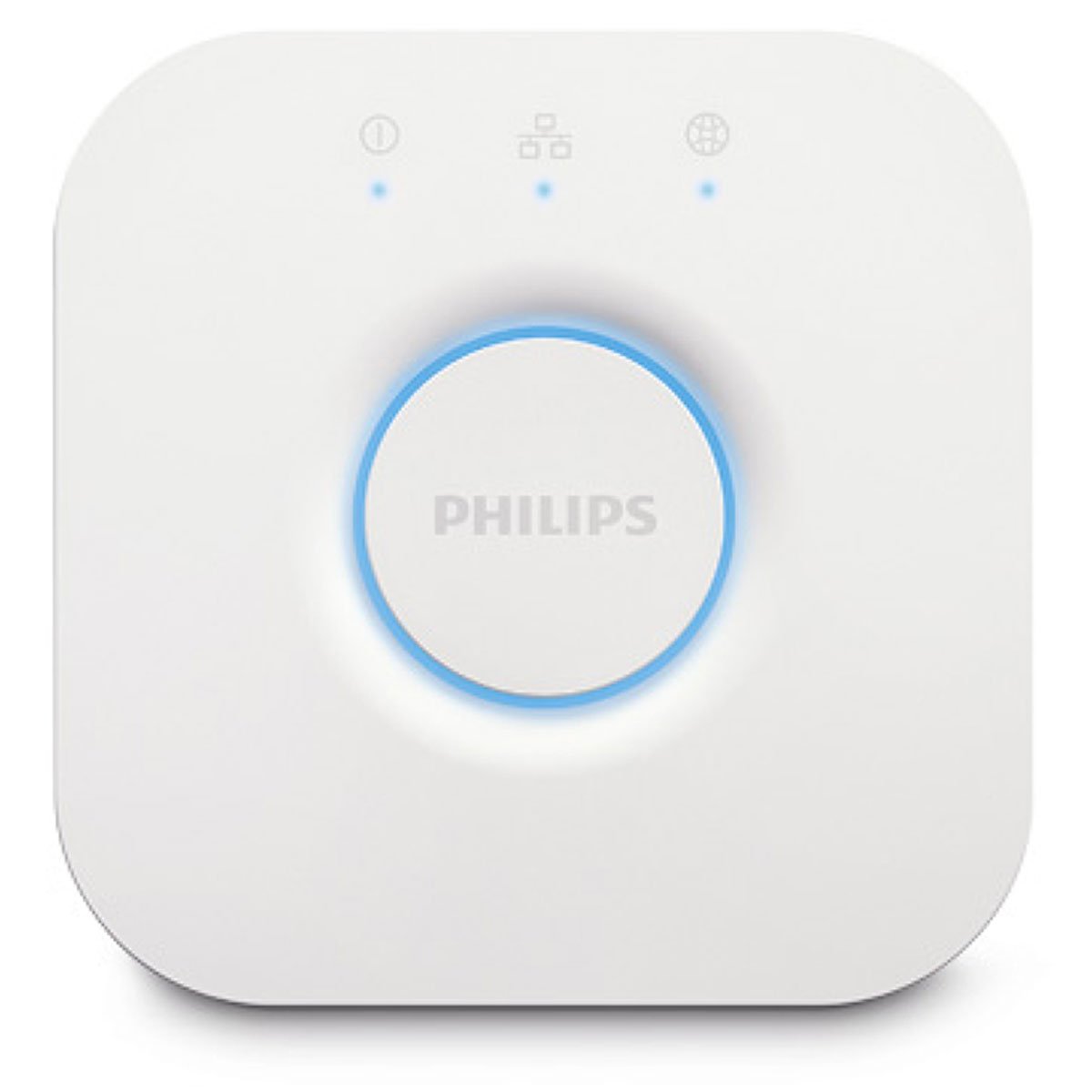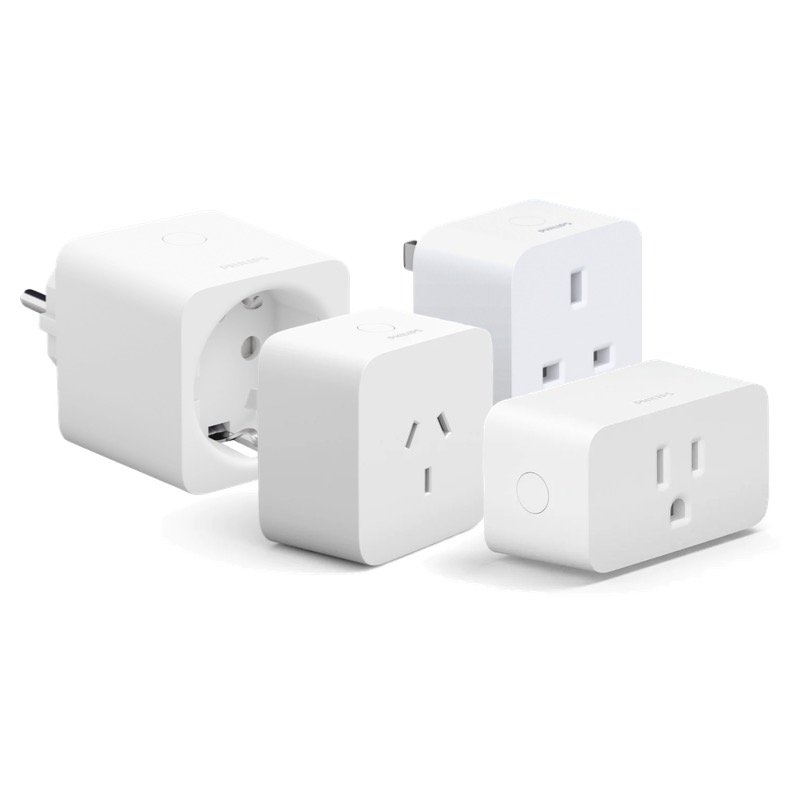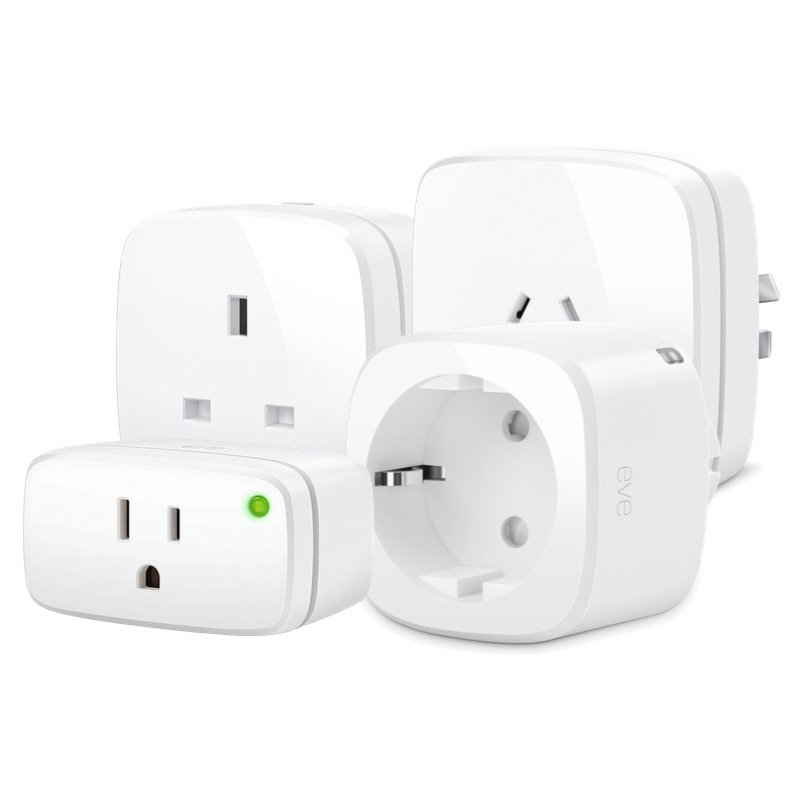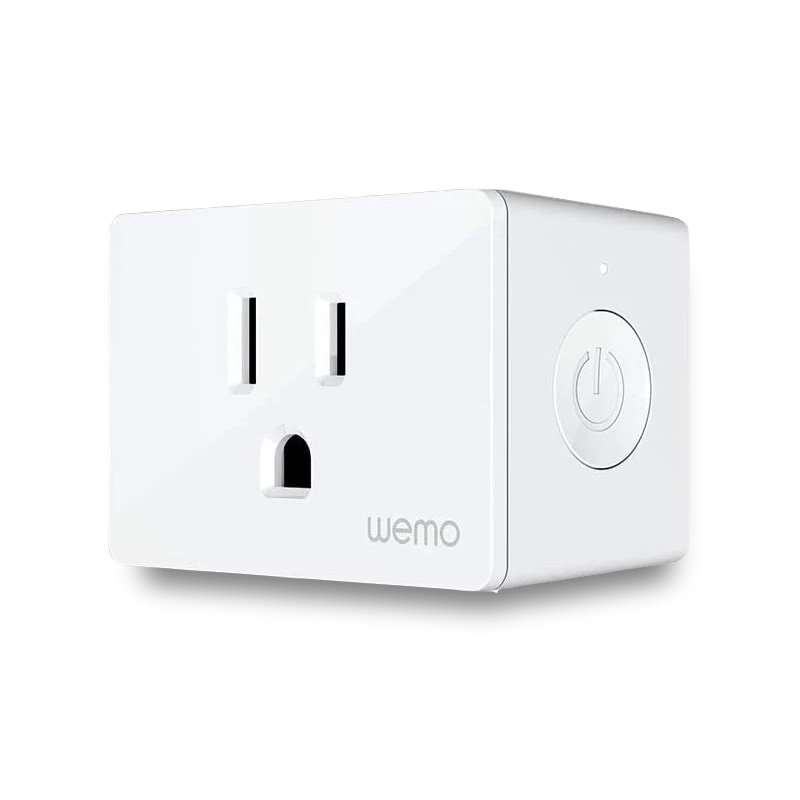5GHz Smart Plugs? These Are Your Options
When you buy through links in this article, I may earn an affiliate commission. Learn More.
While the vast majority of smart devices, including the smart plug (aka smart outlet), are still using slower 2.4 GHz Wi-Fi, there are some Wi-Fi router configurations that might benefit from sticking to the 5 GHz band.
This is generally due to poor band steering functionality in dual band routers which can cause common headaches when trying to discover and pair new devices, or maintain a reliable connection to them from a smart phone on the 5 GHz band.
Even so, the smart device industry has little incentive to support dual band capabilities for most devices. In some cases where the higher speeds can be beneficial, such as video cameras, we’re starting to see this become more common, but for other simpler devices like smart plugs there isn’t much movement.
Still, if you do feel that you’d be better off with a 5GHz Wi-Fi smart plug, there are a couple of options, but we’ll also dive into how we can avoid those common issues without needing a 5 GHz smart plug specifically.
Why do smart devices still use 2.4GHz?
If 5 GHz is faster then you might be asking why almost all Wi-Fi smart plugs only use 2.4 GHz.The first reason is cost. Many smart plug makers are trying to keep prices down for competitive reasons. Commonly available, low cost Wi-Fi chipsets don’t support 5 GHz as a rule. Dual band requires extra components and firmware logic that adds to the complexity and development time.
The second reason is that 2.4 GHz does still have longer range because lower frequencies can punch through obstructions better. This is very dependent on the local environment, distance to the router, building materials in use, and other factors, but it does provide some more certainty that their smart plug will work where you want to put it in your home.
Finally, there is no functional need to support 5 GHz. The primary benefit of the higher frequencies is higher speed, and smart plugs require very little to work just fine. These devices typically don’t have much computing horsepower, and only need to send and receive simple control signals and status data.
As such, a smart plug typically has no use for high speed connections and can make do with pretty low signal, low speed Wi-Fi and still get the job done. Faster data throughput isn’t going to make your smart plug respond any quicker to commands as the amount of data being sent is relatively minimal.
5GHz Smart Plug Models
I’ve looked high and low for a dual band smart plug, or even just one that supports 5 GHz alone, and I’ve only been able to find three options, both US specific products.
If you’re in another market, read on below for other smart plug options to avoid Wi-Fi network concerns. Many of the best smart plugs actually fall under these alternatives.
EIGHTREE Smart Plug
✔ 2.4 and 5GHz Wi-Fi, no hub
✔ Supports Alexa, Google Assistant, SmartThings
✔ Schedule and Timer functions
✔ 2 year warranty
✘ Requires Tuya app sign-up
This basic smart plug provides a very cost-effective solution to the 5GHz dilemma. Cheap and compact the costs are kept down by using off-the-self smart home hardware through the Tuya cloud platform. The downsides here are that you need to sign up to this cloud service and use their app, but their built-in support of Alexa and Google make it one of the easier set ups, and it should work reliably. Something that can’t be said of all cheap smart devices.
They offer a generous 2-year warranty and it comes in both US and UK variants, stock levels permitting - It’s been quite a popular release, so you might find them unavailable.
User reviews so far are very positive, both in terms of the small form factor and the ease of setup. If you just want a basic smart plug that works with 5GHz Wi-Fi thenm for the pricem these are probably worth a try.
GHome Smart Plug
✔ 2.4 and 5GHz Wi-Fi, no hub
✔ Supports Alexa, Google Assistant,
IFTTT, SmartThings
✔ 15A General, 5A LED
✔ On-board schedules, group control
✘ Requires Tuya sign-up
GHome is an unknown player in the smart home market that has begun to offer cheap smart devices running on the Tuya platform. The GHome Smart Plug is a smart plug that support both 2.4 GHz and 5 GHz Wi-Fi bands, with a general load limit of 15A on 120V circuits.
While some customers have had difficulty getting the plug set up on 5GHz Wi-Fi, they seem to be holding up fairly well based on a largely positive customer feedback rating.
Via the Tuya platform you can use these with Amazon Alexa, Google Assistant, IFTTT, Samsung SmartThings, but the set up can be hit and miss. Alexa in particular can be finicky getting the integration to take initially.
Some customers claim 5GHz is not supported, but digging into these claims I’ve found that you simply need to ensure you phone is on 5GHz during the setup process. The app only connects the plug to the band your phone is on at the time.
I’d also caution that you get what you pay for. These cheaper smart devices can be prone to short lifespans, and these do indeed show concerns of early failure. I’d normally expect these issues to be ironed out with more time in the market but these low cost brands don’t really care enough to invest. Your mileage may vary, as they say.
Broadlink Smart Plug Mini
✔ 2.4 and 5GHz Wi-Fi, no hub
✔ Supports Alexa, Google Assistant,
IFTTT
✔ 10A General load
✔ On-board schedules
✘ Only supports 5GHZ on 802.11.b/g/n
✘ Requires app sign-up
Smart device maker BroadLink claims to be the first to market with a 5 GHz smart plug, likely true, but this also has a downside. Their implementation uses an older Wi-Fi standard (802.11n) which means that newer routers that requires 802.11ac for their 5 GHz connections won’t work with this. To be fair BroadLink calls this out pretty clearly on the product page and also notes it may not work with mesh system for similar reasons.
If you have an older dual band router then this smart plug will provide a standard 10 Amp solution that also works with BroadLink’s range of other smart devices, controllers, and switches. That’s all controlled via their app, which you’ll need to sign up for to get this working.
These may also be discontinued now, I’m seeing them out of stock everywhere I can find any mention of them.
How Can We Avoid the 5GHz problem?
As the only real reasons to want 5 GHz smart plugs specifically revolve around Wi-Fi connectivity problems and band switching on your network, we can avoid this requirement by not using Wi-Fi at all.
There are several smart device communication protocols that can be used to build out your smart home without needing to worry about adding the devices to your Wi-Fi network, and can actually be much simpler and more reliable to use.
How do we connect to these devices if they don’t use Wi-Fi? We need to use some kind of smart hub or controller that can act as a central device creating a bridge between networks. Yes, some people balk at the notion of having to add hubs to their smart home, but many smart homes already have a device that can act as a hub for one of more of these other communication methods. These smart hubs are either a dual band device that supports 5GHz Wi-Fi or use wired Ethernet, so avoid the 2.4 GHz problems that we might see with individual smart plugs.
I’m not going to provide an exhaustive list of these other smart plug options, but we can explore a few easily accessible possibilities by way of example. There are other options where the plug manufacturer also offers a suitable hub device that is often small and very affordable (such as the Sengled smart hub), which can be a viable option if you need more than one smart plug.
Amazon Echo with ZigBee smart plugs
If you’re an Amazon Alexa user than taking advantage of the growing number of Echo devices that include a ZigBee smart home hub is a no-brainer. ZigBee is a dedicated smart device network that provides it’s own mesh for reliability and range extension, delivers very fast response times, and has a wide range of smart home devices already available for it that you can use with Alexa.
You’ll need an Echo device that supports these, such as the 4th Gen Echo, which is itself dual band capable so your smart plugs don’t have to be.
Philips Hue with ZigBee smart plugs
The popular Philips Hue smart lighting system offers an extensive range of smart lighting solutions including plugs and switches which also run on the ZigBee protocol. Hue also has, arguably, the largest list of compatible smart platforms and controllers on the market, so whatever smart home and voice assistant you prefer to use, Hue will likely work out of the box.
To use the Hue system you’ll need an inexpensive Hue Bridge to provide the control center and establish a ZigBee network for the smart plugs which you can also use for their vast array of smart lighting options and switches.
The Hue bridge connects to your router via Ethernet, so there is no Wi-Fi involved. Once done you can use the compact Hue Smart Plug and not worry about 5 GHz at all.
Use Thread smart plugs
Thread is the newest and most promising smart home protocol to come along and works similar to ZigBee. It also provides its own self-healing mesh network and offers very fast response times and no Wi-Fi hassles.
Support is growing rapidly and can be found built into many smart speakers and smart home hubs now. These can be used with either Apple HomeKit, Google Home, SmartThings, and many other dedicated smart home platforms right now. You’ll need a suitable Thread capable border router from those companies to get started, and then you’ll be able to use the growing number of Matter over Thread smart plugs that are in the market.
To provide a Thread gateway to your normal network so you can access your Thread smart plugs you’ll need either a late model HomePod or an Apple TV 4K for HomeKit, or for Google home you’ll need either a Google Nest Wi-Fi router or Nest Hub Max. These gateway devices support dual band Wi-Fi, so you won’t have issues connecting them to 5 GHz.
Frequently Asked questions
Is there a 5GHz smart plug?
Yes, there are 5GHz smart plugs available, but the choices are very limited. I’ve only been able to locate two products that supports 5GHz at all, and one of them doesn’t work with newer routers that use 802.11ac Wi-Fi.
If you really need this then your best bet is the EIGHTREE smart plugs. This smart plug works with true dual band connectivity and also has a 15A load rating capable of handling typical household loads.
Can 2.4 GHz devices connect to 5 GHz networks?
If a device only supports 2.4GHz Wi-Fi then they can’t connect directly to the 5 GHz band. They simply don’t have the hardware for the higher frequency radio required. Most smart home tech is in this category as leaving out the extra hardware helps keep the price down, and they really don’t have any use for the higher internet speed on offer since they don’t transmit large amounts of data.
Routers should be able to handle both bands and coordinate traffic between them, either using the same SSID or by treating each band as a separate local network. Unfortunately, there are still consumer grade routers that don’t do this very well.
Should I separate my 2.4 GHz and 5 GHz bands?
Separating your Wi-Fi bands onto different networks may seem like an easy solution, but it’s likely to cause you more headaches as you may encounter other problems getting devices to talk to each other. In theory this shouldn’t be an issue as your router should handle the traffic between them, but it depends on how your router is configured and whether it even gives you this option.
This can also cause connectivity issues if you use personal devices for wireless internet further away from the router. A dual-band network will allow those devices to choose the best band at the time to get the best performance, but if the networks are separated then it won’t be able to do so smoothly, and you will likely end up with interruptions.
Try your router with combined bands first and only look at separating them if you have major issues.
Should smart home devices be on 2.4GHz or 5GHz?
In many cases you won’t have a choice, the device hardware will dictate if you can use 5 GHz at all. Providing you don’t have any issues with connectivity to devices on your 2.4 GHz network then I would leave them there.
You’ll get better Wi-Fi signal, and they typically won’t need the higher speeds that 5 GHz is for. The only exception here would perhaps be security cameras and streaming devices, but even those won’t need 5 GHz speeds to work well at this point, even if they need 4K video streams.
In Summary
Having problems getting your 2.4 GHz devices and your 5 GHz devices to play nice together is unfortunately all too common. Short of taking a gamble on a new dual band router in the hope that it will work better, you can opt to try and get only 5 GHz smart plugs for your smart home. This will prove difficult, however, because most smart plug manufacturers don’t bother supporting it.
Reasons of cost and complexity factor into it, but ultimately smart plugs simply don’t benefit from the better data speeds 5 GHz can provide, plus they suffer from shorter usable range as well, which is a problem for devices that may be installed at the far reaches of your home by necessity.
There are a couple of US options for 5 GHz smart plugs, but you might be better off considering using a wireless protocol other than Wi-Fi for these types of devices. ZigBee, Z-Wave, and Thread are all viable options for smart plugs, and can be added to many smart homes already depending on what smart home platform you use.
Otherwise, it’s fairly inexpensive to add the necessary hub or smart speaker that can get you started, and you’ll benefit from the extra utility, such as voice control, and additional connected devices such an addition provides.



